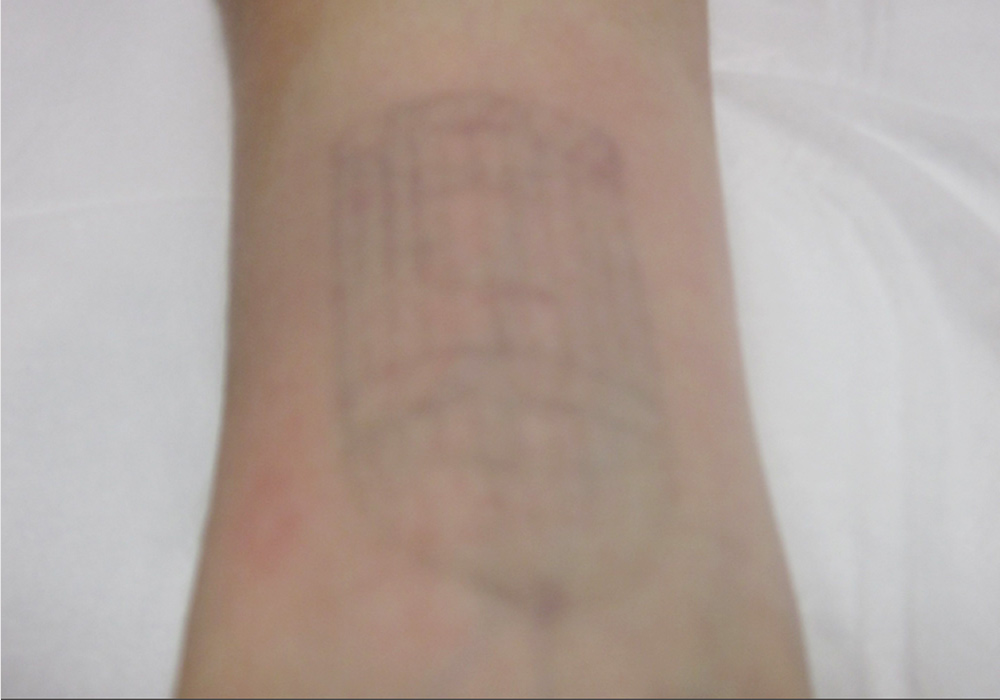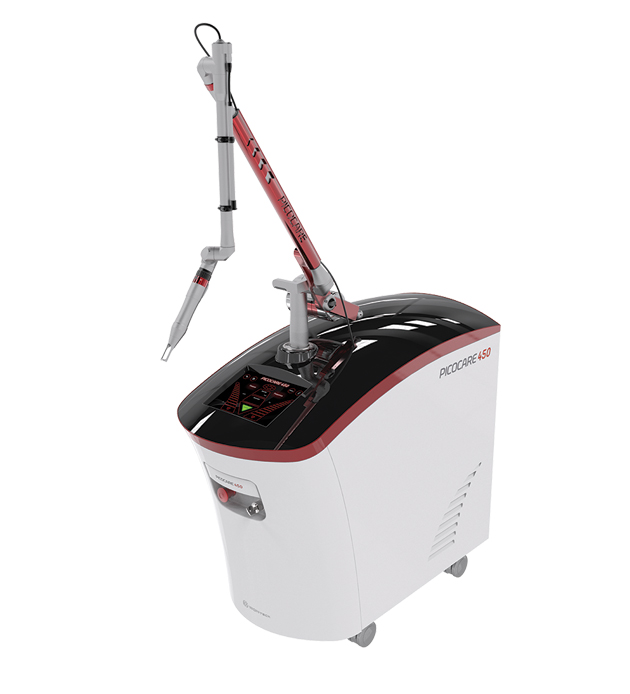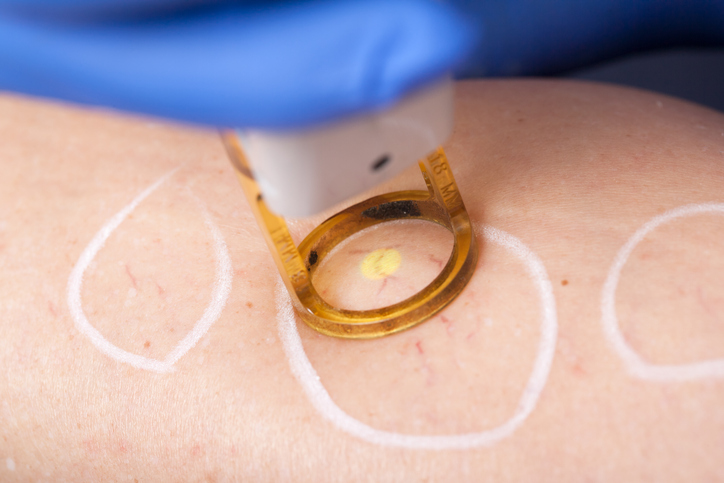 After
After
 Before
Before
Tattoo Removal
5 Treatments with Piqo laser to remove this tattoo
Dr Michael Rich is a specialist dermatologist who has been performing tumescent liposuction for over 30 years. Find out if Liposuction is suitable for you at ENRICH Clinic.
At ENRICH Clinic, we have a wide range of dermatological and cosmetic body treatments tailored to individual body and patient needs.
At ENRICH Clinic, our treatments are performed by our medical team consisting of doctors, nurses, and dermatologists and are tailored to each patient’s skin health needs.
ENRICH Clinic is committed to your skin health and well-being with a range of dermatological & cosmetic treatments tailored to the individual. Our treatments are performed by our medical team consisting of doctors, nurses, and dermatologists.
Skin health is essential for everyone. ENRICH Clinic has a wide range of technologies and dermatological solutions to help you achieve your skin care goals.
In the past, removing a tattoo often meant trading it for a significant scar. Today, with the rapid advances in laser tattoo removal technology, tattoo removal can be achieved effectively but regardless having a tattoo removed is a big decision and takes time and is not just a one-treatment gig.
We have been removing tattoos with laser technologies for over 15 years. We even do difficult cases – any skin tone, any tattoo ink or colour. We’ve got you covered.
We’ve developed our very own tattoo-removal program so we can help you get the best out of your laser tattoo-removal treatments. We have two lasers for tattoo removal in Melbourne, the PiQ04 and the Picocare 450. Both these lasers can tackle any colour on any skin tone.
Tattoos have had their time in the sun over the past few decades, with many of us deciding to take the plunge and get inked for various reasons. That hasn’t always worked out as well as we might like. Undoing a tattoo, however, can be done and the discomfort, timing and cost of the removal are all dependent on the tattoo.
Laser tattoo removal does hurt, let’s not sugarcoat it. This is because the laser uses very narrowly directed heat in a pulse, which hits skin cells and heat causes inflammation and pain.
Laser tattoo removal feels like a rubber band being flicked against the skin, so it is a bit uncomfortable. We have anaesthetic cream or a local anaesthetic injection if it is too uncomfortable. We each have different pain thresholds, and we will work with you to make the treatments as comfortable as possible. Most people find the discomfort tolerable.
Our picosecond lasers are so named because instead of a nanosecond-long pulse of laser beam, it has just a short, hard picosecond pulse. This pulse heats the tattoo ink in picoseconds with a stronger pulse of laser light than conventional nanosecond lasers, breaking it up into smaller particles. The speed and energy mean less heating of the skin cells, thus possibly reducing pain and inflammation, but at the same time, the smaller particles mean the tattoo is often removed faster.
The PiQ04 tattoo removal laser has four such frequencies, which allows it to get all tattoo ink colours.
These four frequencies in a laser are important for tattoo removal, therefore, if you have colourful tattoos or darker skin, our laser will have the best chance at removing your tattoo. Some lasers only do red and black inks, leaving other ink still in the skin.
The tattoo type, shape, colour & patient skin will determine which laser is best to use on a particular tattoo.
The procedure of tattoo removal is reasonably simple. Each ink colour has a frequency that it ‘matches’, so we set the tattoo removal laser to whichever frequency we are working to remove, then apply the laser to the skin that contains those colours.
The laser won’t affect any other colours, which is why lasers are really useful – they do not work on skin they are not supposed to. We can zero in on the ink we’re aiming for.
The laser beam breaks up the ink into tiny particles, which over the coming weeks, is reabsorbed by your body and expelled via your normal body systems without incident.
Now you can see why it’s important to have a trained tattoo removalist performing your procedure.
The size of the tattoo, how many colours, and what area of the body the tattoo is on will all determine the time it takes to remove the tattoo. You can always expect more than one treatment since if there is more than one colour or the treatment area is large, you have to allow the body time to repair itself between sessions, and the ink to disperse.
Our lasers have taken treatment times from eight or ten treatments down to as little as five. This is quite an advancement if you consider what most laser clinics are charging for their multitudinous, slow treatments with partially effective lasers.
Some laser tattoo removal clinics in Melbourne are even using IPL machines, which have a very broad laser beam and are not suitable for tattoo removal, despite the manufacturers claiming otherwise. We do have an IPL laser at the clinic but we don’t use it for tattoo removal.
No tattoo removalist can promise full tattoo clearance. Sometimes, dense tattoos can be more difficult to remove in their entirety. Nobody can remove white tattoo ink with a laser, because lasers do not understand white. (Incidentally, this is why fair-haired fair-skinned people have trouble getting laser hair removal – the hair is too light compared to the skin tone for the laser to detect.)
Healing time between sessions could be up to 12 weeks, especially if you heal slowly.
We usually work on black first until it’s about 50 per cent gone, and then other colours will be approached. Each colour is treated separately because all colours have their own light frequencies they respond to. If this strategy isn’t adhered to, the skin will burn.
If you have a lot of colours, your treatments could be fortnightly, but you’ll need to speak to your dermatologist for more information on your specific tattoo.
After your treatments, the skin will scab over with some redness and swelling. The after-effect goes down as it normally would with any other wound of the same nature, over the period of a week or two.
In some cases, there may be leftover ink, and from time to time, textural changes could be present on the skin. If you get burnt, you could have scarring, so choose your tattoo removalist carefully.
Our cosmetic doctors perform our tattoo removal at ENRICH and understand the process intimately.
Some inks will respond differently to others because they are often made differently. It could take a longer time for the inks to be broken apart.
Cosmetic tattoo ink is not the same as the ink you would get on your body, and it responds differently to lasers.
If you have cosmetic tattoos you want to be removed, talk to your dermatologist for help – it’s not as easy as a regular tattoo, and results can be mixed. But, we can do a test patch and see how your particular ink will work. Cosmetic tattoos also have a tendency to dissipate as time goes by, so waiting could be a viable option for a cosmetic tattoo such as those done on the eyes as liner or brows.
Contact us to make an appointment if you are considering laser tattoo removal.
*Results may vary from person to person
*With all surgeries or procedures, there are risks. Consult your physician (GP) before undertaking any surgical or cosmetic procedure. Please read the consent forms carefully and be informed about every aspect of your treatment. Surgeries such as liposuction have a mandatory seven-day cooling-off period to give patients adequate time to be sure of their surgery choice. Results may also vary from person to person due to many factors, including the individual’s genetics, diet and exercise. Before and after photos are only relevant to the patient in the photo and do not necessarily reflect the results other patients may experience. Ask questions. Our team of dermatologists, doctors and nurses are here to help you with any of your queries. This page is not advice and is intended to be informational only. We endeavour to keep all our information up to date; however, this site is intended as a guide and not a definitive information portal or in any way constitutes medical advice.
 After
After
 Before
Before
"*" indicates required fields

If you’re looking for a surefire way to achieve clearer, smoother and more evenly toned skin, we’ve got the solution: Picocare 450 Laser.

There is a very good reason we don’t have just one laser for all cosmetic skin treatments – it wouldn’t work! Learn the basic of how lasers work & what they can treat.

Picosecond lasers are a major breakthrough in laser tattoo removal – we can now clear tattoos in half the treatments with less pain, in any colour, on any skin tone.

As with many great discoveries, the acne scar treatment potential of the picosecond laser was discovered by accident, during tattoo removal.
Subscribe to the ENRICH newsletter and receive latest news & updates from our team.
Enrich Clinic acknowledges the Traditional Lands of the Wurundjeri Woi Wurrung and Bunurong peoples of the East Kulin Nations on which we work and trade. We pay respect to their Elders past, present and emerging. We extend our acknowledgement and respect to the LGBTQIA+ community who we welcome and support. Read our full Acknowledgement Statement here
